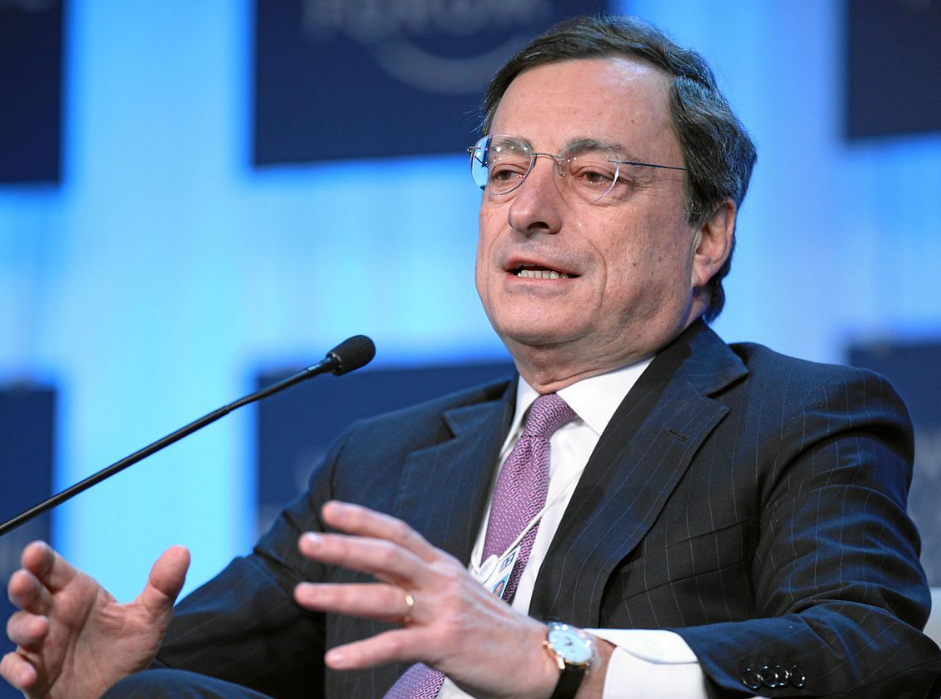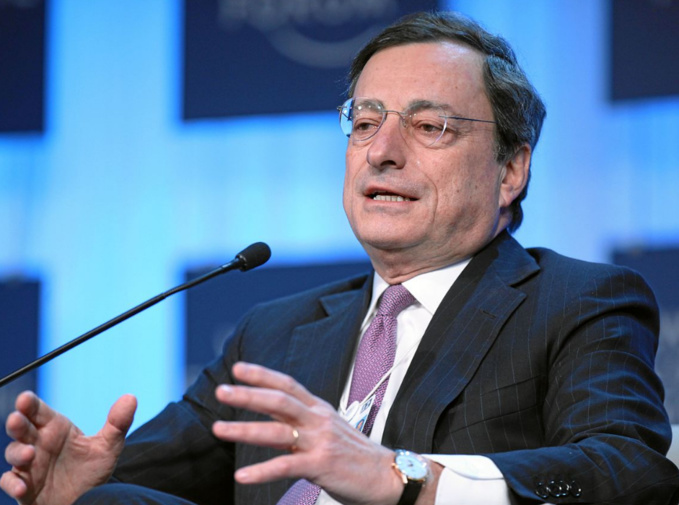Against the background of the continued weakening of the euro zone economy, the ECB hinted at the possibility of further reducing the deposit rate and restarting the quantitative easing program. At a meeting in Frankfurt, which was held on Thursday, governing board of the regulator kept the main refinancing rate at zero, leaving the deposit rate at a record low of minus 0.4%. At the same time, the ECB noted in the commentary that it expects rates to remain “at the current level or lower” at least until the end of the first half of 2020. In practice, this may mean a further deepening of the deposit rate in the negative zone already in September 2019.
The ECB also said that they are considering options for additional policy easing, including launch of a new quantitative easing program only a few months after the previous one was discontinued.
Recall that the program lasted from January 2015 to December 2018 - during this time the bank bought bonds worth a total of € 2.6 trillion.
A month ago, the ECB President Mario Draghi warned that the regulator will have to resort to additional methods of stimulation in the absence of clear signals for the revival of the European economy. However, hopes for the resumption of growth in the second half of 2019 did not come true, head of the ECB admitted on Thursday at a press conference. Weak growth is expected in both the second and third quarter. “The forecast is getting worse and worse in countries where industry is very important,” Mr. Draghi said. According to the latest forecast of the European Commission, the growth rate of German GDP this year may slow to 0.5%, that is, to the minimum figure for the last six years. The July index of the business climate in the country, published on Thursday, fell from 97.5 in June to 95.7 points, showing the worst value since 2013. The slowdown in international trade under the conditions of persistent geopolitical uncertainty, weakening of Chinese growth and likelihood of a difficult Brexit also raise concerns among the ECB.
Inflation in the euro zone also keeps lagging far behind the target value “just below 2%”. In June the European Commission fixed it at the level of 1.2% and does not expect an increase even on the horizon of five years. Against this background, it will be necessary to create “a significant number of monetary incentives” to ensure preservation of favorable financial conditions, support expansion of the euro zone and gradual increase in domestic prices to bring inflation to the target in the medium term, Mario Draghi said. Key decisions are likely to be made this fall. According to the Bloomberg consensus forecast, in September the regulator will reduce the deposit rate by 10 basis points and announce a new round of the quantitative easing program from January 2020.
Note that the slowdown in global economic growth is pushing other central banks to ease monetary policy. It is expected that the US Federal Reserve, which in June declared its readiness to “act as it needs to support economic expansion”, may reduce the size of the key rate next week.
source: bloomberg.com
The ECB also said that they are considering options for additional policy easing, including launch of a new quantitative easing program only a few months after the previous one was discontinued.
Recall that the program lasted from January 2015 to December 2018 - during this time the bank bought bonds worth a total of € 2.6 trillion.
A month ago, the ECB President Mario Draghi warned that the regulator will have to resort to additional methods of stimulation in the absence of clear signals for the revival of the European economy. However, hopes for the resumption of growth in the second half of 2019 did not come true, head of the ECB admitted on Thursday at a press conference. Weak growth is expected in both the second and third quarter. “The forecast is getting worse and worse in countries where industry is very important,” Mr. Draghi said. According to the latest forecast of the European Commission, the growth rate of German GDP this year may slow to 0.5%, that is, to the minimum figure for the last six years. The July index of the business climate in the country, published on Thursday, fell from 97.5 in June to 95.7 points, showing the worst value since 2013. The slowdown in international trade under the conditions of persistent geopolitical uncertainty, weakening of Chinese growth and likelihood of a difficult Brexit also raise concerns among the ECB.
Inflation in the euro zone also keeps lagging far behind the target value “just below 2%”. In June the European Commission fixed it at the level of 1.2% and does not expect an increase even on the horizon of five years. Against this background, it will be necessary to create “a significant number of monetary incentives” to ensure preservation of favorable financial conditions, support expansion of the euro zone and gradual increase in domestic prices to bring inflation to the target in the medium term, Mario Draghi said. Key decisions are likely to be made this fall. According to the Bloomberg consensus forecast, in September the regulator will reduce the deposit rate by 10 basis points and announce a new round of the quantitative easing program from January 2020.
Note that the slowdown in global economic growth is pushing other central banks to ease monetary policy. It is expected that the US Federal Reserve, which in June declared its readiness to “act as it needs to support economic expansion”, may reduce the size of the key rate next week.
source: bloomberg.com



















